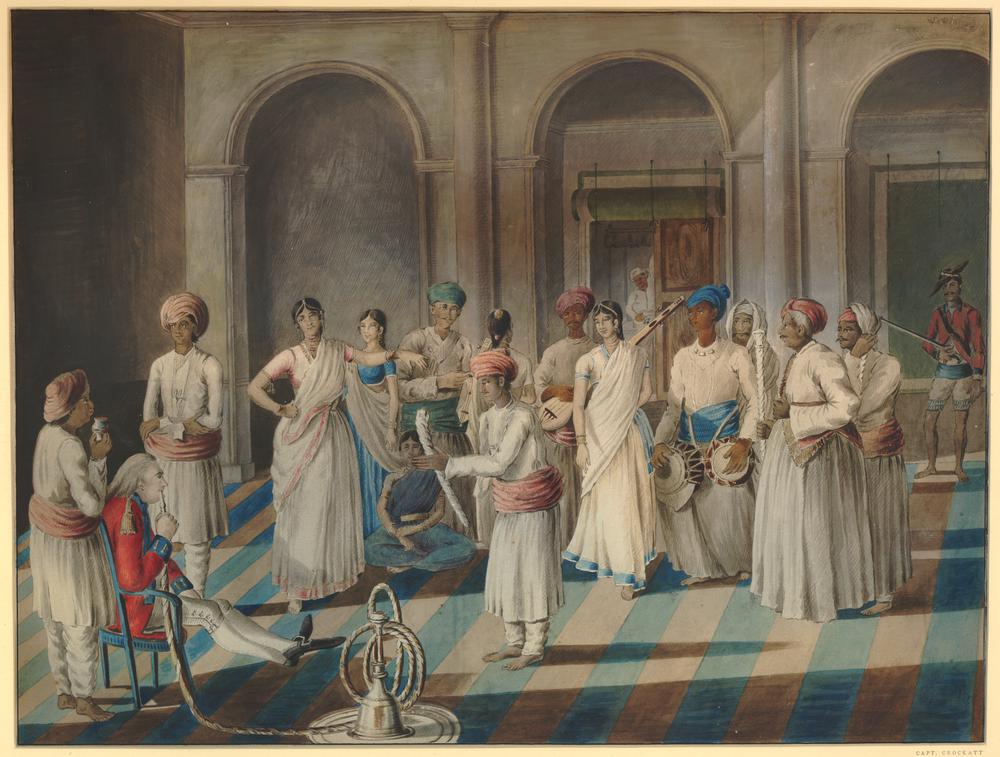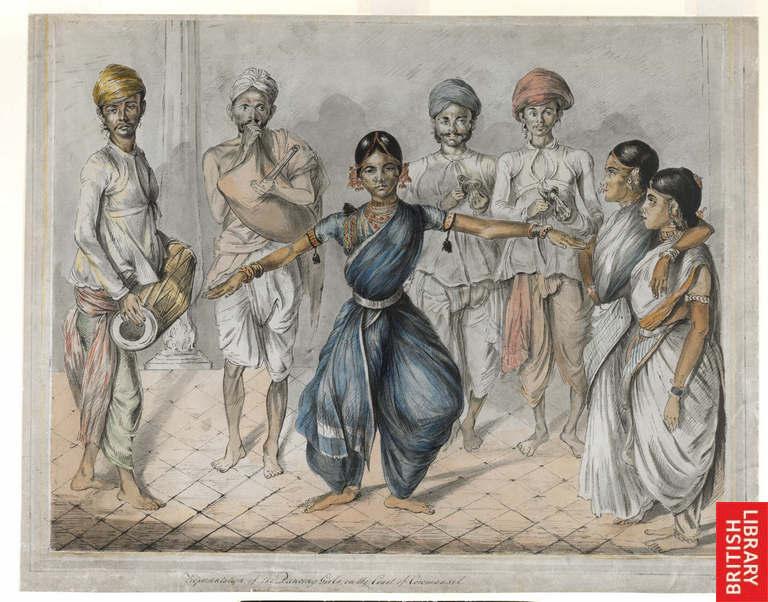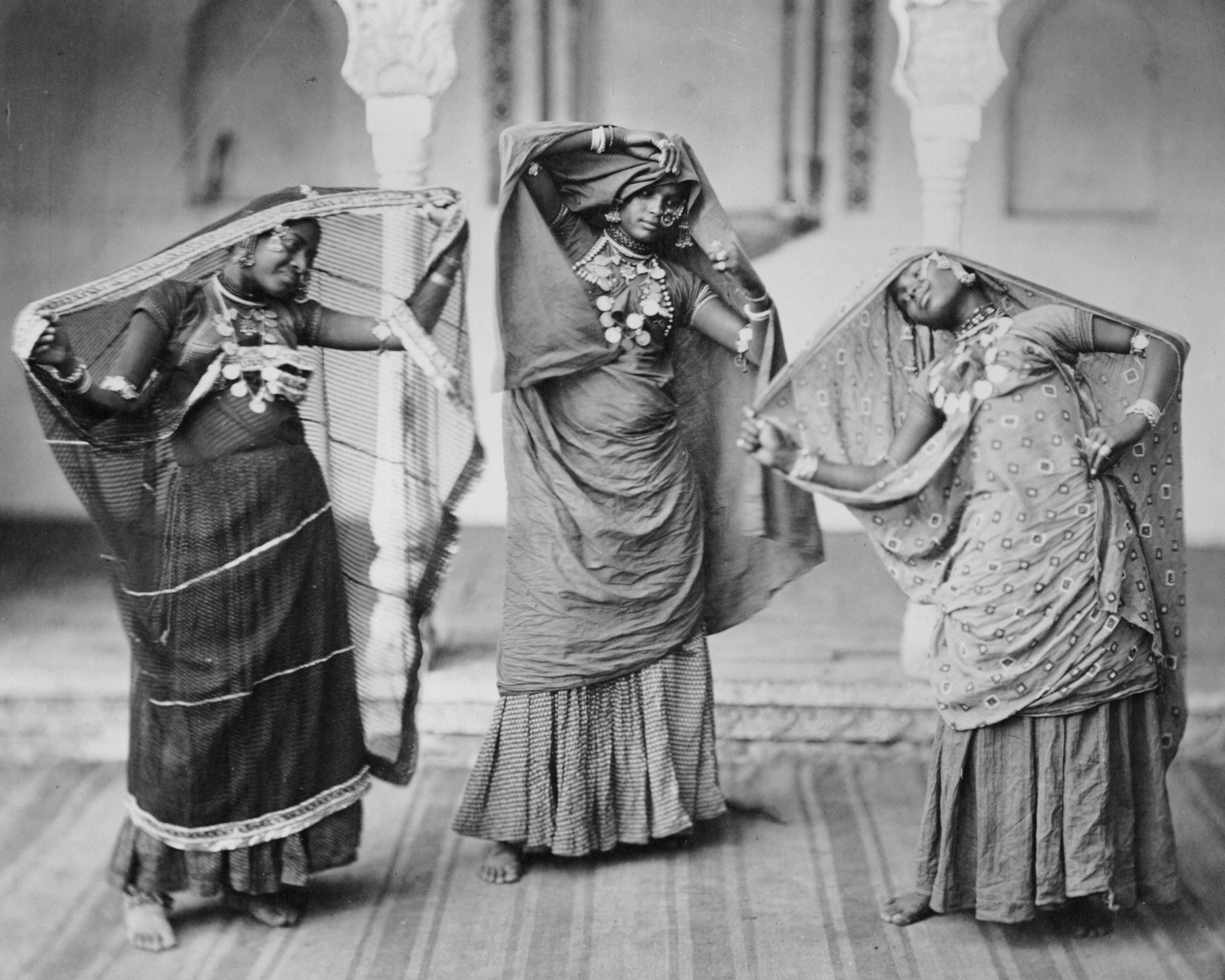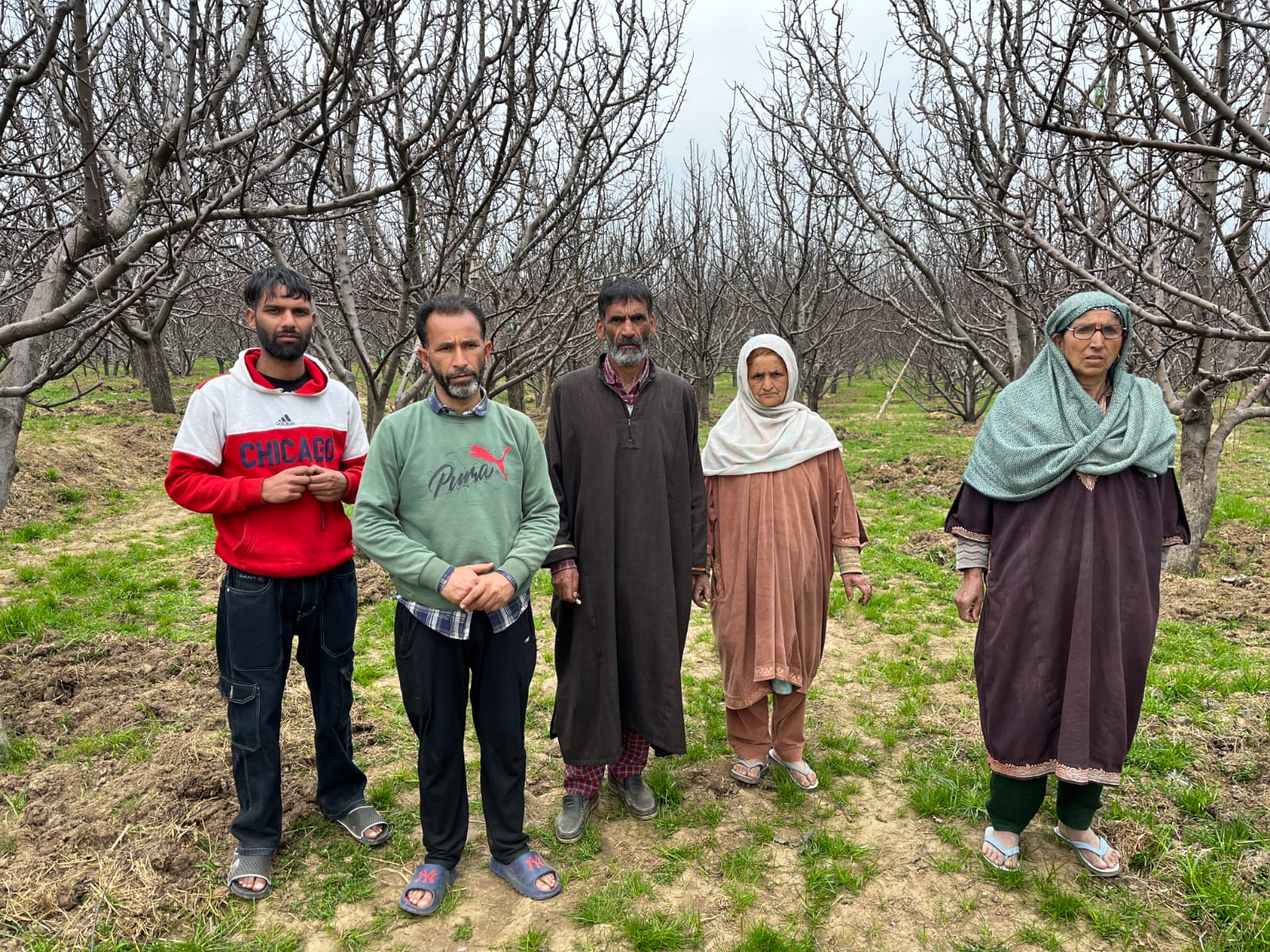Trigger warning: Mentions rape and child sexual abuse
On the 28th of July, 1875, Major Glasse, an officer of a British garrison stationed in Punjab, entered into a contract with two prostitutes from the Sadr Bazaar in Ferozepur. They were named Rujji and Janki. The two parties arranged that Rujji’s young sister Kariman would be taken to the Glasse residence to be placed at the officer’s disposal for a night, for a sum of Rs. 30. Kariman left the bungalow bleeding that night and died the next day.
The heartrending episode does not end here. In a shocking set of events, the British officer, who was booked under section 373 of the Indian Penal Code (IPC) of 1860 for obtaining the possession of a minor with a view to trafficking her for ‘immoral purposes,’ was acquitted by the Chief Court of Punjab within a few days. Kariman never received the justice she deserved.

Kariman’s story can shed light on the historical context of discrimination and the denial of justice, as experienced by women of certain classes and occupational groups in India’s colonial past where gender, race and sexuality intersected to create new categories of ‘criminal.’
Age of consent conundrum
When the matter was brought before the Punjab Chief Court, it was found “abundantly clear upon the evidence as well his own statement, that Major Glasse had sexual intercourse with her (Kariman).” The Major was to be booked under section 373 of the Indian Penal Code (IPC) of 1860, for obtaining the possession of a minor with a view to trafficking her for ‘immoral purposes.’
At the end of the proceedings, the accused was acquitted on all counts. Using the Madras High Court’s interpretation of the relevant section of the IPC as a precedent, the Chief Court of Punjab viewed the episode as a “casual act of fornication,” and trafficking of the girl was not intended.
On the question of determining whether Kariman was indeed a ‘minor,’ there was some debate. The questions of the age of consent and sexual intercourse with minors had been vociferously debated through the decades of the 1870s and 1880s. Different local governments of British India, the Indian elite and senior officials within the military held varying opinions as to the suitable age of a minor. Some considered 14 years to be suitable, while others proposed 16 years.

The Lieutenant Governor of Punjab proposed that the relevant section of the IPC, be amended to fix the age at 14 years, given the girls in the region “matured early given the habits and customs of native society,” and that a higher age of 16 years would create challenges given the rampant practice of “buying and selling, for immoral purposes” in the province. Making a case for the age of consent to be fixed at 14 years, he argued that “these girls though under 16, are still old enough to be married.”
Different local governments of British India, the Indian elite and senior officials within the military held varying opinions as to the suitable age of a minor. Some considered 14 years to be suitable, while others proposed 16 years.
The court concluded that the officer could be punished only under “the strictest reading of the law” and that any penalty would deal a blow to morale within the military. The fact that government regulation of prostitution created pathways for young children to enter the trade was glossed over.
The verdict was clear – the intention of the Government was to widen the scope of Sections 372 and 373 so as to exclude from their purview, the occasional hiring of minor girls for single acts of intercourse, and confine their application to buying or hiring otherwise ‘chaste‘ minor girls to be employed as professional prostitutes.
The episode was treated by the Punjab Chief Court merely as a case of an “unmarried girl who was deflowered,” “not seduced,” and “not violated,” but simply “prostituted,” considering that she “received money for the act.” Her death was viewed as a mere occupational hazard.
The investigation of the Punjab Chief Court revolved overarchingly around determining the age of the deceased girl. The actual fact of her death was sidelined. No member of the bench proposed any quantum of punishment for the crime wherein a young girl had indeed died in the possession of the accused officer, simply because the IPC did not apply to a case involving a “single act of illicit intercourse for money.”
The episode was treated by the Punjab Chief Court merely as a case of an “unmarried girl who was deflowered,” “not seduced,” and “not violated,” but simply “prostituted,” considering that she “received money for the act.” Her death was viewed as a mere occupational hazard.
Age as a formulation of a colonial subject
The incident of Kariman’s death must be viewed in the context of an ongoing debate in the 19th century – whether Sections 372 and 373 (concerned with the sale and procurement of a minor girl for purposes of trafficking and prostitution respectively) applied to ‘chaste’ girls under 16 years alone, or to underage prostitutes as well.
Most Courts held that sections 372 and 373 of the Penal Code “deal with the case of trafficking in innocence” and hence did not apply to those already ‘prostituted.’ Similar interpretations were applied to Section 366 of the Code dealing with a kidnapping. It applied to the “kidnapping of a chaste girl and not to one in the habit of having illicit intercourse.”
Also Read: The Anti-Trafficking Bill Puts The Lives Of Sex Workers At Risk. Here’s Why.
Expedient readings of the law placed certain groups of women deemed as prostitutes, outside the scope of justice and the protective function of the State. The official discourse upon the Age of Consent, chastity and what qualified as ‘illicit intercourse,’ culminated in the abandonment of ‘public‘ women who were recruited and enclosed by the State.
Making of prostitutes
The Cantonment Act XXII, 1864, provided for 12 to 15 Indian women for each regiment of British soldiers. Each regiment contained about a thousand soldiers. The women were kept in brothels called chaklas. They were licensed by military officials and were allowed to consort with European soldiers only. Most of the women came from impoverished families.
The structural inequalities that pushed women into prostitution were often produced and perpetuated by colonial governments, the colonial relations of production and the resulting transformation in the socio-economic milieu accompanying the emergence of new urban centres and the slow death of traditional Indian crafts.
Also Read: The History Of The Colonial State And The Unmaking Of The Tawaif
The Cantonment Act was introduced owing to grave concerns over mounting venereal disease numbers amongst British troops. Between 1864 and 1869 the British Parliament introduced and extended the Contagious Diseases Acts as a response to the problem of venereal diseases among the military. One of every three sick cases involved venereal diseases.

The Act established districts and garrison towns where military and local authorities cooperated to regulate prostitution for the British forces. Women suspected of being prostitutes were asked to undergo medical examinations and detained for treatment if found diseased.
No detention existed for their white male customers. In the event of noncooperation by the alleged prostitute, she was taken before a magistrate, coerced into examination and committed to a ‘lock hospital’ until given a clean bill of health by the Chief Surgeon. The Act regulated and structured prostitution in British garrisons.
The structural inequalities that pushed women into prostitution were often produced and perpetuated by colonial governments, the colonial relations of production and the resulting transformation in the socio-economic milieu accompanying the emergence of new urban centres and the slow death of traditional Indian crafts.
The lower class identity of the women compounded the perceived sense of ‘danger‘ posed by them to the health of the British fighting arm in India. Female milk vendors, grass cutters, pankha pullers, “tattie-waterers” (possibly a reference to the British slang for potato: ‘tattie‘) and coolies were groups most resented and suspected by both the military and medical officials, as agents of venereal disease and ‘defilement.’
Women were often employed in the works undertaken by the Public Works Department (PWD) at several stations, especially since female labour cost less. The State considered itself in a unique conundrum: how to reduce disease and protect the soldier, without disturbing the economy of the cantonment system.
While public women were dehumanised and their injury trivialised, the European soldier was infantilised and cast as vulnerable; as an unsuspecting victim. Colonial discourse on sexuality was underpinned by gendered and racialised constructs of morality and chastity.
The ‘prostitute‘ was a peculiar colonial subject, made constantly amenable to the probing gaze of the state – its surveillance, policing and mechanisms of control, but precluded from its ‘benevolent‘ justice. In the face of a narrative of sexual disgrace and ‘loose‘ behaviour by a female, the violence of the offender, who was white and male, was treated with marked leniency.
While public women were dehumanised and their injury trivialised, the European soldier was infantilised and cast as vulnerable; as an unsuspecting victim. Colonial discourse on sexuality was underpinned by gendered and racialised constructs of morality and chastity.
For instance, the discourse on the age of consent drew upon notions of the native female body which were believed to become sexualised ‘pre-maturely’ attributed to a combination of factors such as the climate, food and native customs.
‘Prostitute’ a peculiar colonial subject
The criminality of the ‘prostitute‘ in colonial India was derived from her identity as a native female subject belonging to the lower classes or one of the “prostitute castes” – a term coined by Sir Denzil Ibbetson, who served extensively in Punjab and became the Lieutenant Governor of Punjab province in 1907. Ibbetson blamed what he called a class of “agrarian prostitutes” or “sand rats”- rural labouring women living in villages adjacent to cantonments as well as military camps – for the large volume of venereal cases amongst infantry battalions which lived in temporary military camps along the stations of the Northern Command.
The ‘prostitute‘ of colonial India stands out as a unique colonial subject because she is both produced and persecuted by the State. Seen as a necessary evil, mechanisms to ensure that sexual recreation was always readily available to British troops remained in place throughout the 19th and into the early 20th century, ensuring that women of ‘vice‘ were subjected to penalties in the form of fines and imprisonment.
A perusal of colonial legislation and regulations pertaining to sex, explains that ‘prostitutes‘ were constituted by those very laws. By looking into the understudied figure of the ‘prostitute‘ and investigating State regulation of vice, this article attempts to illuminate the nature of colonial governmentality and the formulation of colonial subjectivities.
The ‘prostitute‘ of colonial India stands out as a unique colonial subject because she is both produced and persecuted by the State. Seen as a necessary evil, mechanisms to ensure that sexual recreation was always readily available to British troops remained in place throughout the 19th and into the early 20th century, ensuring that women of ‘vice‘ were subjected to penalties in the form of fines and imprisonment.

Often, women of the labouring classes were suspected of prostitution and viewed as vectors of venereal disease, revealing the racialised and gendered notions of morality and sexuality which characterised the colonial gaze.
State regulatory measures discussed in this article were founded upon gendered notions of race and sexuality which attributed liability and criminality to robustly surveilled colonial subjects who were disciplined through technologies of control geared towards their dehumanisation and vilification.
Class status, race and gender were weaponised as evidence to bolster presuppositions of their deviance and innate promiscuity and preclude them as recipients of the protective functions of the State.
Bibliography
- H. A. Rose, A Glossary of the Tribes and Castes of the Punjab and North-West Frontier Province Vol. II, 1997, p. 475. Originally published in 1911.
- Philippa Levine, “Venereal Disease, Prostitution, and the Politics of Empire: The Case of British India” in Journal of the History of Sexuality Vol. 4, No. 4 (Apr. 1994), pp. 579-602
- The Indian Penal Code Act No. 45 of 1860, Universal Law Publishing, New Delhi, 2010.
- David J. Pivar, “The Military, Prostitution, and Colonial Peoples: India and the Philippines, 1885-1917” in The Journal of Sex Research, Vol. 17, No. 3, History and Sexuality (Aug. 1981), pp. 256-269
- Sumanta Banerjee, Dangerous Outcast: The Prostitute in Nineteenth-Century Bengal, Seagull Books, Calcutta, 1998.




